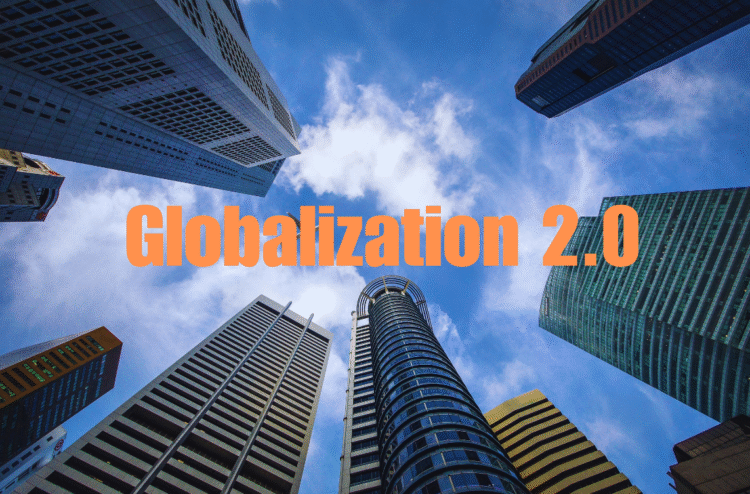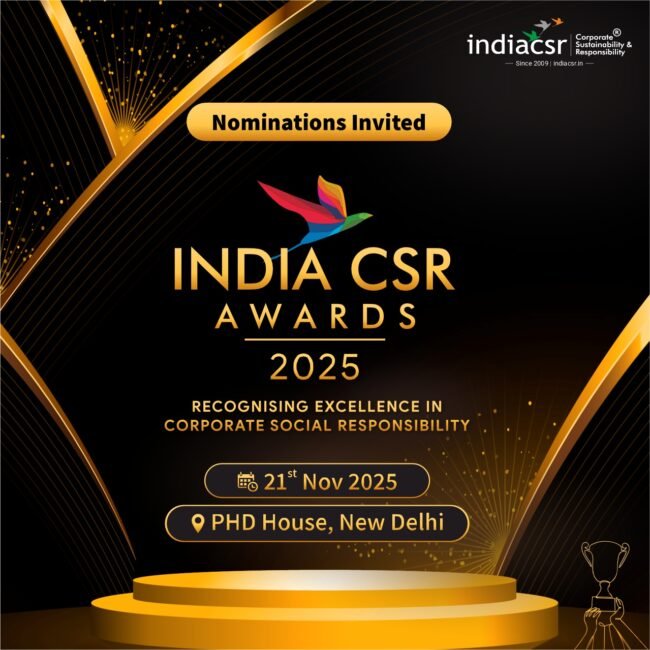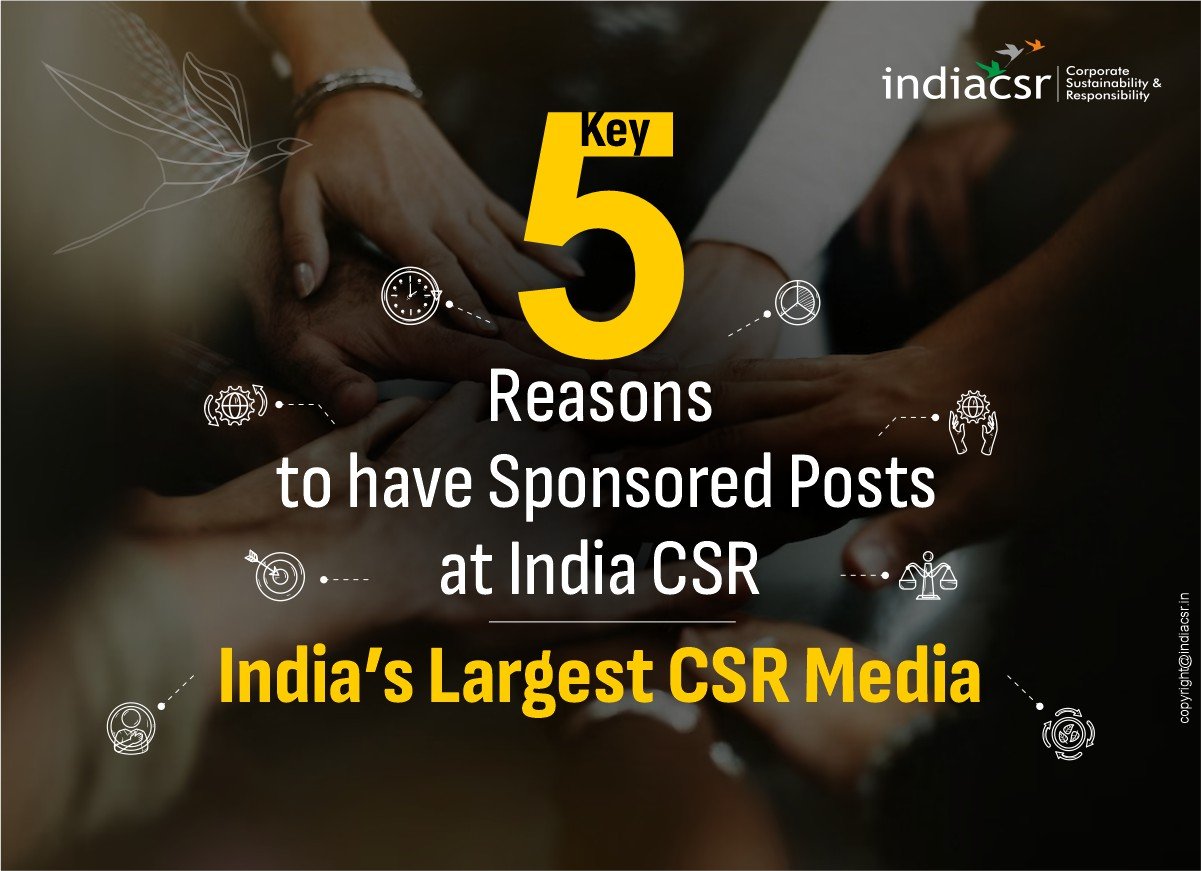Globalization 2.0 ushers in a new phase of international business, defined by deeper connectivity, rapid technological innovation, and evolving geopolitical dynamics.
Globalization 2.0 builds on the interconnected world of the late 20th century but responds to its shortcomings. Traditional globalization (often called 1.0) integrated markets through cheap labor and open trade, but it led to over-reliance on single suppliers and rising inequalities. In contrast, 2.0 aims for “trusted value chains” that balance efficiency with risk mitigation, incorporating factors like decarbonization and digital oversight.
Why Now?
Geopolitical shifts, including U.S. tariffs and supply chain disruptions, have accelerated this transition. Leaders argue it’s essential for economic stability, with projections showing emerging markets driving 70% of global growth by 2030.
Opportunities and Challenges for Leaders
For executives, this means rethinking strategies: investing in nearshoring and AI tools for visibility. However, it could raise costs by 10-20% initially, per industry estimates.
In an era of fractured alliances and accelerating technological change, the concept of Globalization 2.0 has emerged as a blueprint for reimagining international trade and economic interdependence. Coined in policy circles and boardrooms alike, it signals a departure from the unchecked expansion of the post-World War II order—characterized by offshoring, just-in-time manufacturing, and borderless capital flows—toward a more fortified, equitable system. This evolution is not merely theoretical; it’s a pragmatic response to crises that exposed the fragility of the old model, from pandemic-induced shortages to escalating U.S.-China rivalries. As global GDP growth slows to around 3% annually amid these tensions, business leaders are at the forefront, advocating for—and adapting to—a world where resilience trumps raw efficiency.
Globalization 2.0: Key Definitions
Globalization 2.0: A Paradigm Shift in International Business
Globalization 2.0 signifies a paradigm shift in international business, driven by technological advancements that have transformed the way companies operate on a global scale. The interconnectedness of economies and societies has reached unprecedented levels, offering both challenges and opportunities for businesses aiming to thrive in this evolving landscape (Dow et al., 2009).
The Role of Digital Technology
At the heart of Globalization 2.0 lies the omnipresence of digital technology. The internet, artificial intelligence, and big data have not only facilitated global communication but have also revolutionized business processes. Companies must harness these tools to streamline operations, enhance efficiency, and gain a competitive edge in the international arena (Porath, 2023).
Navigating Diverse Markets
As globalization progresses, businesses find themselves dealing with increasingly diverse markets. Understanding the unique needs, preferences, and cultural nuances of consumers in different regions is essential. Successful international businesses tailor their strategies to each market, recognizing that a one-size-fits-all approach is no longer effective (Peluso, 2023).
Importance of Cultural Adaptability
In Globalization 2.0, cultural adaptability is not merely a nicety but a strategic imperative. Companies that can seamlessly integrate with local cultures build trust and rapport, fostering stronger relationships with customers and partners. This adaptability extends to internal practices, creating diverse and inclusive workplaces that reflect the global nature of business (Hale et al., 2022).
Geopolitical Influence on Business
The geopolitical landscape significantly impacts international business. Trade agreements, political stability, and diplomatic relations shape the ease with which companies can operate across borders. In Globalization 2.0, businesses must carefully monitor and navigate these geopolitical shifts, adjusting their strategies in response to changing international dynamics (Behie et al., 2023).
Ethical Responsibilities in Globalization 2.0
As businesses expand globally, ethical considerations become increasingly complex. From environmental sustainability to social responsibility, companies are under scrutiny from consumers, regulators, and advocacy groups. Navigating Globalization 2.0 requires a commitment to ethical business practices that transcend geographical boundaries (El-Swaify, 2022; Rathore, 2020).
Supply Chain Vulnerabilities
Globalization 2.0 has highlighted the vulnerability of intricate supply chains. Events such as pandemics and geopolitical tensions can disrupt the flow of goods and services. Businesses must focus on building resilient supply chains, considering alternative sources and technologies that enhance adaptability in the face of unforeseen challenges (Dang et al., 2020).
The Role of Data and Analytics
The abundance of information in the digital age can be overwhelming. Companies must sift through vast amounts of data to make informed decisions. Developing robust analytical capabilities and leveraging data-driven insights are crucial for businesses seeking to cut through the noise and identify meaningful trends in the global landscape (Gorman, 2013).
Agility and Flexible Business Models
The rapidly changing nature of Globalization 2.0 demands agile and flexible business models. Companies must be quick to adapt to market trends, technological advancements, and shifts in consumer behavior. Embracing innovation and fostering a culture of continuous improvement are essential for staying ahead in this dynamic international business environment (Jaloliddin, 2023).
***
More resilient, secure, inclusive, and sustainable globalization
At its core, Globalization 2.0 is defined as a “more resilient, secure, inclusive, and sustainable globalization” than the “unbridled” version of the past 75 years. This framework preserves the benefits of open markets, such as innovation diffusion and cost reductions, while rectifying deficiencies like supply chain vulnerabilities and environmental neglect. Think tanks like the Information Technology and Innovation Foundation (ITIF) propose it as a U.S.-centric trade policy emphasizing advanced industries—semiconductors, AI, and clean energy—through strategic alliances and robust enforcement mechanisms. Similarly, academic analyses frame it as an era of “non-Western modernity,” where plural identities and interdependence challenge Western-dominated narratives.
Five Forces
The term draws inspiration from Thomas Friedman’s seminal eras of globalization, where 2.0 specifically denoted the integration of markets for goods, services, and capital from roughly 1880 to 2000. Today’s iteration, however, is distinctly post-2020, influenced by “five forces”: deglobalization pressures, digital transformation, sustainability mandates, geopolitical realignments, and the rise of Asian leadership. For instance, Northeastern University’s D’Amore-McKim School of Business highlights how Asia’s economic ascent is reorienting global flows, with China and India projected to account for over 40% of world GDP by 2040.
Business leaders have been vocal in shaping this narrative, often framing Globalization 2.0 as both a peril and a pivot point. BlackRock Chairman and CEO Larry Fink, in a June 2025 Financial Times op-ed, declared, “It’s time for the second draft of globalisation,” arguing that the old model is “coming apart” under the weight of inequality and instability. He envisions a “re-globalization built not just to generate prosperity, but to distribute it more equitably,” urging investors to prioritize capital allocation toward inclusive growth. Fink’s perspective underscores a key tension: while tariffs and sanctions fragment trade, they also create openings for “friend-shoring”—partnering with allies like Mexico or Vietnam over adversarial suppliers.
Echoing this, Altana Co-Founder and CEO Evan Smith has positioned his supply-chain software firm as an architect of the new order. In a May 2025 Wall Street Journal podcast, Smith asserted, “Globalization broke,” pointing to how over-dependence on China amplified risks during the pandemic. He advocates for “trusted networks and value chains” in Globalization 2.0, emphasizing AI-driven transparency to rebuild trust: “Our mission is to fix globalization, not to fight it—to make it resilient, fair, and sustainable through tools like product passports that track goods from origin to end-user.” Smith’s manifesto, released via Altana, outlines principles including diversified sourcing and ethical labor standards, warning that without such reforms, global trade could contract by 5-7% annually.
Other executives offer complementary insights. At the 2023 Bloomberg New Economy Forum’s “Globalization 2.0” panel, HSBC Group Chief Executive Noel Quinn stressed the need for “de-risking without de-globalizing,” noting, “Commercial imperatives and government incentives are driving companies to relocate supply chains, but we must map new contours to avoid isolationism.” His counterpart, former Volvo Cars CEO Jim Rowan, added a sustainability lens: “In this era, speed beats size—enterprises must reinvent for green mobility, with electric vehicles comprising 50% of sales by 2030 amid reshored production.” These discussions, held amid Singapore’s role as a trade hub, illustrate how CEOs are navigating “economic statecraft,” where policy and profit converge.
A particularly poignant contribution comes from Anand Mahindra, Chairman of Mahindra & Mahindra Group, whose insights in the company’s Integrated Annual Report 2024-25 paint a vivid picture of Globalization 2.0 as a “rebirth” rather than a demise. Mahindra articulates, “Economic nationalism does not spell the death of globalisation but heralds its rebirth. Globalisation is evolving: US market centrality and China-centric supply chains are being replaced by multi-polar, regional collaborations. As structural and political uncertainties diminish US dominance, alternative capital destinations are emerging. Similarly, global supply chains are diversifying away from China, creating new trade partnerships. Lower tariff barriers among regional partners may emerge, boosting free trade and reshaping international trade centres of gravity. Ironically, the US shift toward de-globalisation may lead to a new avatar of globalisation — multi-polar, regional, and driven by domestic imperatives.”
Mahindra’s optimism centers on India’s unique positioning within this landscape: “In such shifting sands, I believe India is well-positioned to emerge as one of the new centres of gravity. We are a stable democracy, generally regarded as a trustworthy partner, and are bolstered by a strong military that is not politicised. The situation with our provocative neighbour is always volatile, but I am optimistic that we can demonstrate the limits to our tolerance without impeding our path to economic ascendance. These implications offer a portal to a stronger future for India and Indian companies.” This vision aligns with India’s policy thrusts like Production Linked Incentives (PLI) and Make in India, which Mahindra sees as synchronizing national interests with global opportunities. He frames India not merely as a participant but as a shaper of this new order, leveraging its demographic dividend, digital infrastructure, and reforms to attract diversified investments.
For Mahindra & Mahindra, this evolution demands—and rewards—resilience, a trait the group has honed over eight decades. As Mahindra elaborates, “But the future remains uncertain. How, then, should we at Mahindra navigate these turbulent waters? Whether it be a country or a business, the winners will be the ones who can successfully navigate uncertainty and ambiguity – the ones who are resilient. Resilience has defined the Mahindra Group for over eight decades. From switching to diesel engines during the oil crisis to thriving through liberalisation, the 2008 financial crash, and COVID challenges, we have adapted, transformed, and evolved. Our federated structure, symbolised by the banyan tree (depicted on the cover), is key to this resilience. Mahindra & Mahindra’s core businesses — auto and tractor — form the trunk, while the aerial roots represent new ventures that anchor themselves independently, expanding resilience and reach.”
This banyan tree metaphor encapsulates Mahindra’s strategy: a robust core in automotive and farm equipment (with FY25 vehicle sales reaching 941,115 units, up 14.1%, and tractor sales at 424,641 units, a 12.2% increase) supports expansive roots in electric vehicles, defense, logistics, and renewables. Mahindra’s alignment with “Made in India, for the world” underscores how Globalization 2.0 enables such firms to turn protectionism into propulsion, fostering innovation that serves both local communities and global markets.
The implications ripple across sectors. In manufacturing, firms like Siemens—under Chairman Jim Hagemann Snabe—face pressure to localize while scaling AI integration, as Snabe noted in a 2025 speech: “We’ve generated strong profitable growth by reinforcing our technology leadership in a world demanding pioneering progress.” Finance leaders, per BlackRock’s annual letter, see opportunities in mobilizing $10 trillion for climate transitions, but warn of volatility from U.S. policy shifts under a potential second Trump term. Emerging markets stand to gain profoundly: BCG estimates they will fuel 75% of global expansion through demographics and middle-class booms, with India’s role amplified by leaders like Mahindra.
| Aspect of Globalization 2.0 | Key Characteristics | CEO Perspectives | Potential Impact |
|---|---|---|---|
| Resilience | Diversified, nearshored supply chains; AI for visibility | Evan Smith (Altana): “Transition from outsourcing to trusted networks”; Anand Mahindra (Mahindra): “Winners will be the ones who are resilient, like our banyan tree structure” | Reduces disruption risks by 30-40%, but raises logistics costs; enables 14%+ growth in core sectors like autos |
| Sustainability | Decarbonization focus; green trade pacts | Larry Fink (BlackRock): “Re-globalization to distribute prosperity equitably”; Jim Rowan (Volvo): “Reinvent for speed in green mobility” | Mobilizes $4-6T in green investments by 2030; boosts EV sales to 50% |
| Inclusivity | Equitable growth for Global South; reduced inequalities | Noel Quinn (HSBC): “De-risk without de-globalizing”; Anand Mahindra: “India shaping a balanced, inclusive approach” | Boosts emerging market GDP share to 60%; fosters regional free trade pacts |
| Security | Friend-shoring; tech export controls | Jim Hagemann Snabe (Siemens): “Pioneering progress in technology leadership” | Mitigates geopolitical shocks, though trade volumes may dip 2-5%; positions India as trustworthy hub |
| Innovation | Advanced industries (AI, biotech); digital platforms | Anand Mahindra: “Turning challenges into opportunities for growth and innovation” | Accelerates R&D, with Asia leading 45% of patents; drives multipolar collaborations |
Critics, however, caution against over-optimism. While proponents like ITIF advocate for U.S.-led frameworks, others at forums like East View Press argue Globalization 2.0’s goal isn’t elevating the Global South to Northern standards but fostering multipolar balance—without a dominant hegemon. This multipolarity could foster innovation but exacerbate divisions, as seen in 2025 CEO surveys where 52% cited supply-chain diversification as a priority amid U.S.-EU-China tensions. Mahindra acknowledges this uncertainty, yet his message is one of cautious hope: Globalization 2.0, navigated with resilience, offers “a portal to a stronger future.”
Looking ahead, Globalization 2.0 demands bold action from the C-suite. As Fink concluded in his letter to investors, “The next seven years matter more than the next seven days,” a call for proactive capital deployment. For MDs and chairmen like Mahindra, success hinges on blending diplomacy with disruption—forging alliances that endure. In this recalibrated world, the winners will be those who view fragmentation not as an end, but as a canvas for reinvention, with India and resilient firms like Mahindra leading the charge.
(India CSR)



















